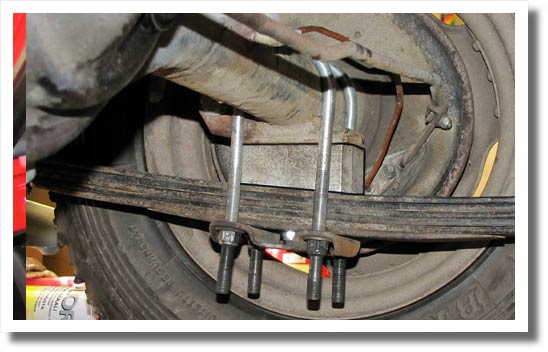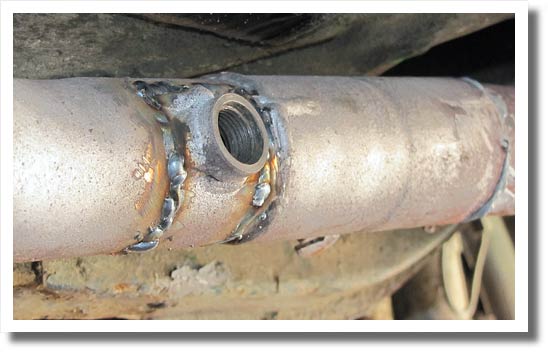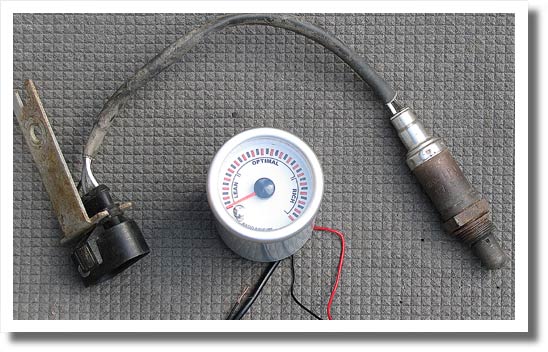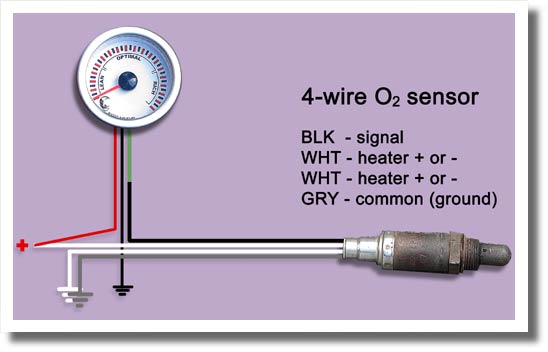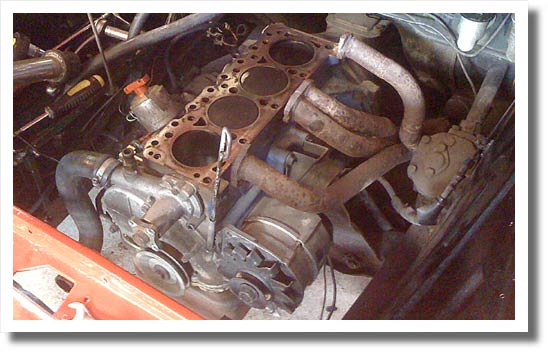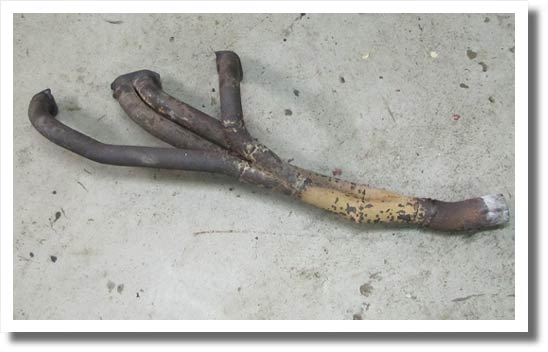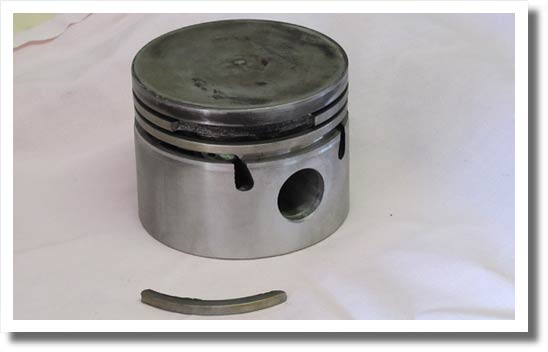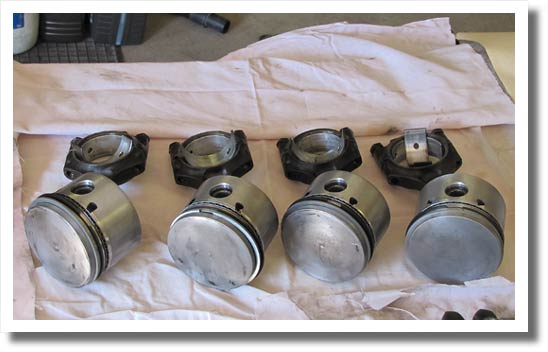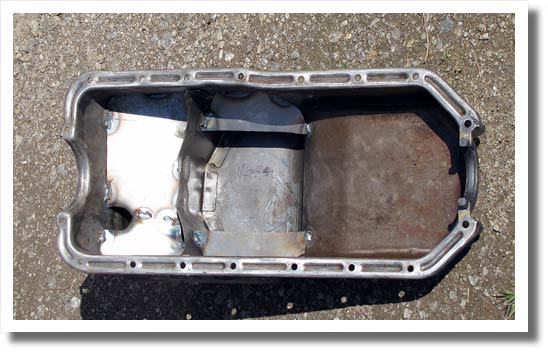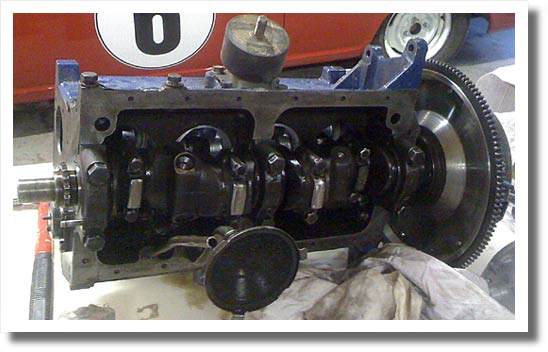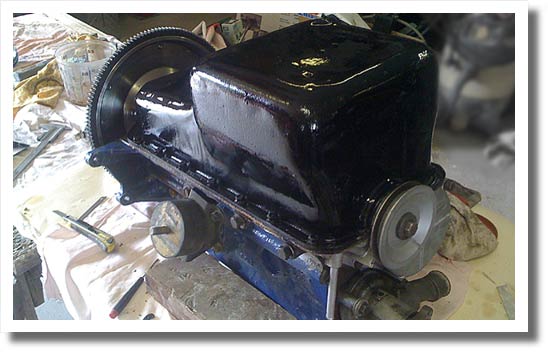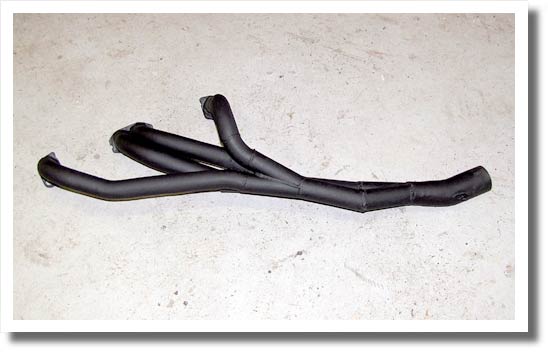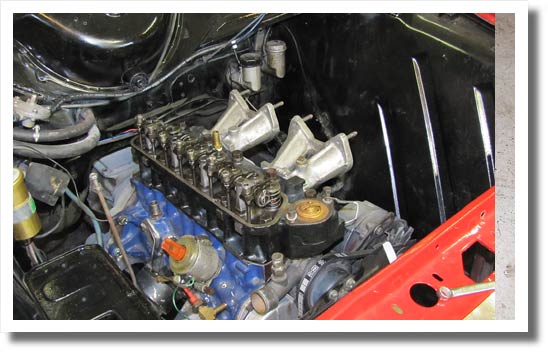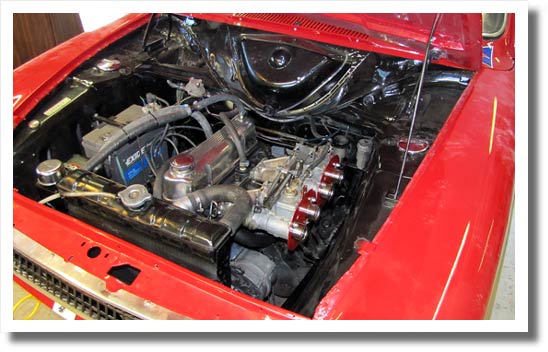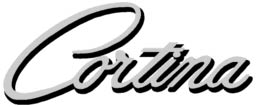
As long as they don't give proved results,
they're more like experiments.
|
The rear end seemed a bit too low, as the exhaust dragged on the asphalt in the corners. The pinion angle was also a bit off, so the lowering blocks were angle cut to improve things. The drivers side lowering block was cut a bit more, in effect making this side higher, to compensate for the weight of the driver. The rear spring is already a bit harder on the drivers side for the same reason, but the balance was still a bit off. |
|
|
|
As the spark plugs looked like the engine runs way too lean some carburetor tuning has to be done. |
|
This is what the O2 sensor off of a junked VW Polo looks like, and the Air/Fuel gauge. |
|
|
|
The image to the left illustrates the wiring of the Zirconia type oxygen sensor. It's a heated model, so the two white heater wires go to + when ignition is on, and to ground respectively. |
|
The cheapo oxygen gauge didn't work at all, but testdriving with a multimeter connected to the oxygen sensor told us what we needed to know. |
it was deemed necessary to take a look at the internals.
First the cylinderhead came off and it was sent to BN Motor
for a thorough check and some improvement to the combustion chambers.
|
|
The cylinder head came off first and revealed a few small scratches in the cylinder walls. Nothing some honing couldn't remedy. |
|
The exhaust header looks sad to say the least. What's worse is the way the collector pipe is welded to the exhaust joint. A hole burned with a mig welder, and there's a huge drollop of material inside the pipe. |
|
|
|
When the pistons came out, a piece fell off of one of them. |
|
The pistons cleaned up, new rings mounted and ready to go into the engine. |
|
|
|
The oil pan was modified with some splash plates. |
|
New bearings have been mounted and the bearing caps torqued after the bearing clearances have been measured with plastigauge. |
|
|
|
The oil pan is painted with rattle can black and mounted to the engine block. So are the oil- and water pumps |
|
The "three Y" exhaust header got a new coupling between the collector at the last Y and the bigger exhaustpipe. And a heat resistant black paint job. |
|
|
|
The engine is back where it belongs, but is still missing carbs, exhaust, valve covers and a few other parts. |
|
The start up and test drive was a success in itself, but the engine didn't run very good, as the distributor's not cooperating. The old one has to go back in. |
|
Introduction,
Body work,
Details,
Tech,
On the track 2013
Experiments and modifications
Modifications for the 2014 season
On the track 2014
Modifications 2014-2016
On the track 2016
Karkmotuning Essex NASCAR Olds 1957 Pontiac Chieftain
